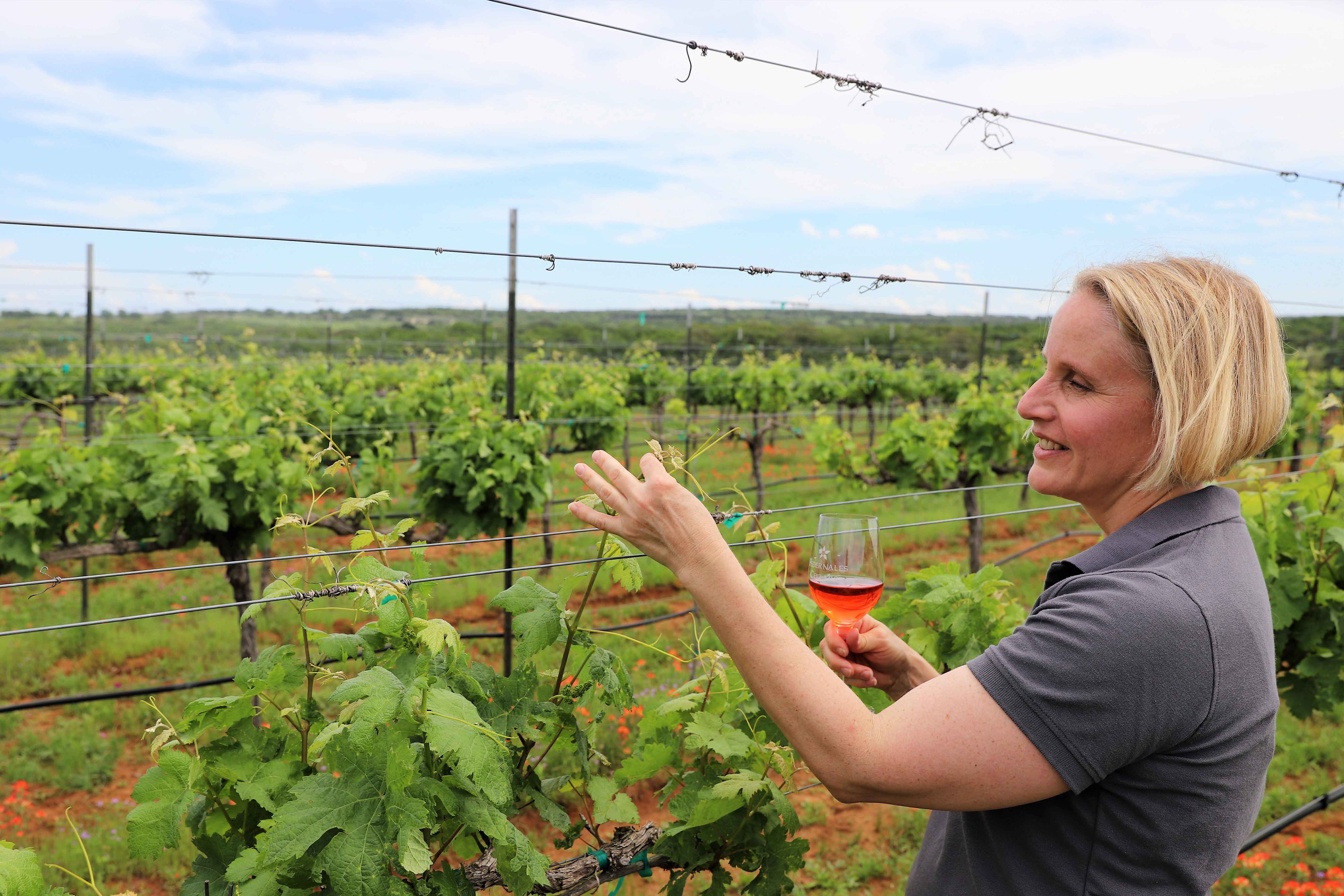September 17, 2020 |
Blog, In the News, Our Wine Story |
Julie Kuhlken
25 Things We’ve Learned Growing Grapes in the Texas Hill Country for the Past 25 Years
No one said being a farmer is easy. That is particularly true for those of us who enter the profession after starting our careers in other “fields.” We have learned a lot about growing grapes and vineyard management in the past 25 years since first planting our Kuhlken Vineyards.
 Here are 25 things we have learned:
Here are 25 things we have learned:
- People think having a vineyard is a very romantic idea.
- One never thinks one’s own vineyard is romantic in the least.
- A good vineyard manager is worth every penny you pay him/her.
- Never plant vines in the Texas Hill Country without first putting in the irrigation system — Yes, seriously, we had to learn this the hard way.
- Learn your vineyard site microclimate, soils, and topography, and what is likely to grow well there. In our case we learned the hard way rather than before planting our first vines. This meant pulling up Chardonnay and Sauvignon Blanc and planting Mourvèdre and Sangiovese.
- Don’t grow something just because you like the grape. Only grow those grape varietals that are going to thrive in the Texas Hill Country.
- Do not plant in a freeze pocket, meaning leave unplanted the bottom of the slope where cold air will accumulate.
- It takes an army of people to hand-harvest a vineyard, so make lots of friends. Wine helps.
- Pruning in the Texas Hill Country means working outside in 35-degree weather, usually with a chilly wind and often a slow drizzle, for eight hours a day while doing hand crunches … for a week.
- One of the most beautiful places in the world is to be in a Texas Hill Country vineyard during wildflower season.
- A benefit of having a family-owned vineyard is that it creates a common purpose across generations and increases time family members spend together. This is especially valuable for the oldest and youngest generations (says the middle generation).
- Different grape varietals have noticeably different annual life cycles with great variation in the timing of when the vines bud out, to how quickly they develop their canopy, and to the sensitivity of the harvest date. It is essential to spend a lot of time walking the rows and observing the evolution of each varietal throughout the year.
- One develops a whole new appreciation for dirt. There can be vital differences in what’s below one’s feet over the space of just yards.
- Busting through caliche with a breaking bar in order to plant vines is like trying to rip through concrete with a child’s plastic spade.
- Once bud break has occurred in March, it is impossible to sleep any time the forecast shows temperatures dipping below 35 degrees.
- Once bud break has occurred in March, it is impossible to sleep any hail is in the forecast.
- Forget sleep during harvest and crush season. During a typical day, we start picking at 6 am and don’t finish crush until well after midnight.
- Sunrise over the vineyard on harvest day is magical.
- Always try to finish hand harvesting in the Texas Hill Country by 10 am before the heat really gets going.
- Wear sunscreen.
- Black widows like vineyards, so wear gloves when harvesting.
- Raccoons can devour what appear to be diarrhea-inducing amounts of grapes.
- One of the most vibrant displays of Autumn foliage in the Hill Country is in the vineyard.
- Lots of grape varieties thrive in the heat of the Texas Hill Country, including Mourvèdre, Grenache, Touriga Nacional, Tinta Amarela, Sangiovese, Petit Verdot, and Albariño …
- … but the king of grapes in the Texas Hill Country, and in Texas in general, is Tempranillo.
After 25 years of learning in the vineyard, we have accomplished a lot. And we are certain that there is a lot more for us to learn.